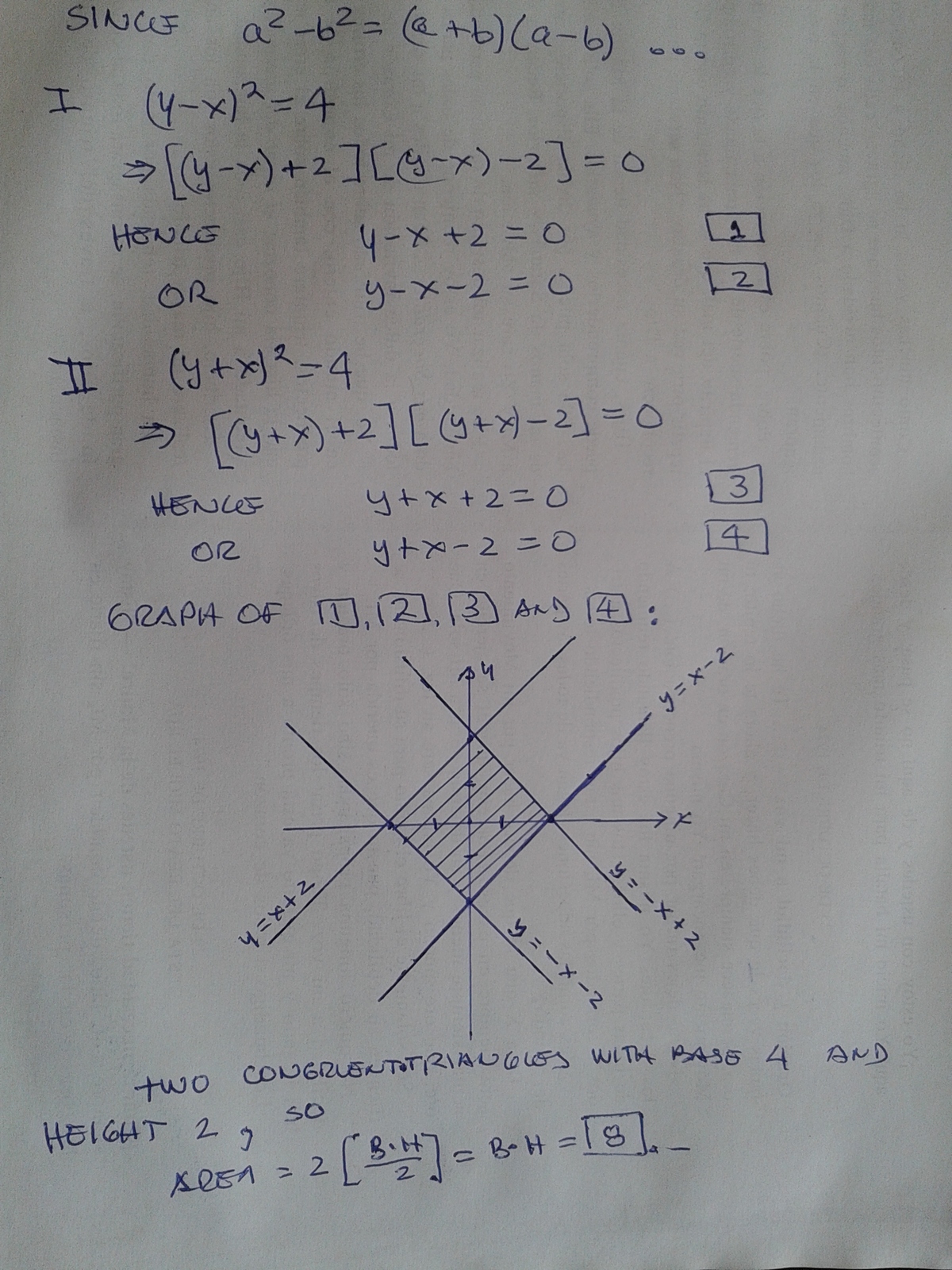Area enclosed by what?
What is the area enclosed by ( y − x ) 2 = 4 and ( y + x ) 2 = 4 ?
The answer is 8.
This section requires Javascript.
You are seeing this because something didn't load right. We suggest you, (a) try
refreshing the page, (b) enabling javascript if it is disabled on your browser and,
finally, (c)
loading the
non-javascript version of this page
. We're sorry about the hassle.
4 solutions
Preform the coordinate transformation u = y − x , v = y + x . Note the Jacobian has magnitude ∣ ∣ ∣ ∣ det ( 1 − 1 1 1 ) ∣ ∣ ∣ ∣ = 2 .
In the new coordinates, the region is mapped to the region bound by u 2 = 4 , v 2 = 4 . This is a square of side length four centered at the origin, so has area 1 6 .
Therefore, in the x y -plane the original region has area 2 1 6 = 8 .
( y − x ) 2 = 4 , ⟹ y = x + 2 . . . . . . ( 1 ) a n d y = x − 2 . . . . . . ( 2 ) ( y + x ) 2 = 4 , ⟹ y = − x + 2 . . . . . . ( 3 ) a n d y = − x − 2 . . . . . . ( 4 ) ( 1 ) a n d ( 3 ) i n t e r s e c t a t x = 0 a n d y = 2 . ( 2 ) a n d ( 4 ) i n t e r s e c t a t x = 0 a n d y = − 2 . ( 1 ) a n d ( 4 ) i n t e r s e c t a t x = − 2 a n d y = 0 . ( 2 ) a n d ( 3 ) i n t e r s e c t a t x = 2 a n d y = 0 . S o C o m m o n a r e a i s a s q u a r e A B C D ( 0 , 2 ) , ( − 2 , 0 ) , ( 0 , − 2 ) a n d ( 2 , 0 ) . T h e d i a g o n a l A C = 4 , S o a r e a A B C D = ( d i a g o n a l ) 2 / 2 = 8 .
( y − x ) 2 = 4 = > y = x + 2 or y = x − 2 ( y + x ) 2 = 4 = > y = − x + 2 or y = − x − 2 So we are asked for the area of 4 times the right triangle formed by y = x + 2 and the coordinate axes. 4 ⋅ 2 2 ⋅ 2 = 8
